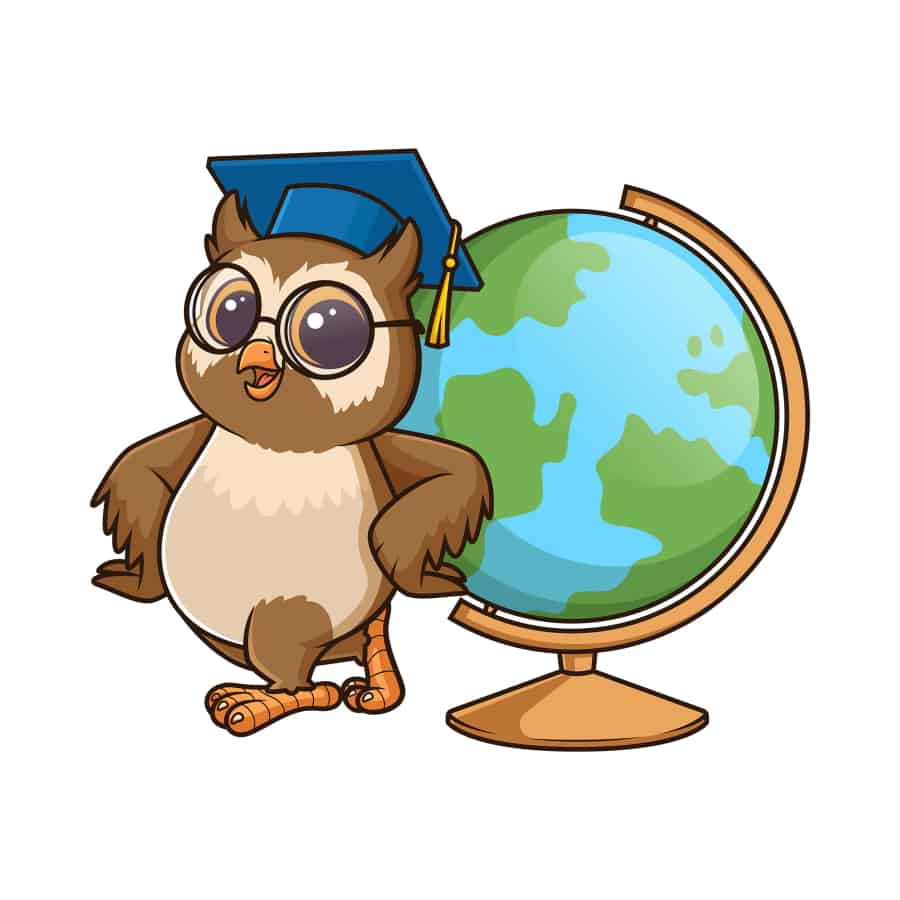
Language is important and has major implications, especially second languages. After all, second languages are often tied to who else someone wants to communicate with, whether it be a certain person or an entire group. Although Australia’s second languages would probably surprise non-Australians, there is a reason for their choices.
The choice of second languages taught in Australia may seem strange initially, but the continent’s location, economy, and history shed light on their language options. Although Australia’s primary language is English, Australia’s most common second languages are:
- Japanese
- French
- German
- Mandarin
For many living in North America and in Europe, Australia seems like a very similar place. Yet, everything from their seasons to their choices in second languages differ. The following paragraphs will help you to understand why these second languages have been chosen for school curriculums and how the United States differs from Australia on this topic.
Contents
- 1 Are Second Language Options in Australia Determined by Foreign Relations?
- 2 Are Second Language Options in Australia Determined by Demographics?
- 3 How Are Languages Chosen for School Curriculums? (America Vs. Australia)
- 4 The Influence of Immigration
- 5 Languages Spoken in Australia
- 6 Why Is Arabic Not a Common Language Taught in Australian Schools?
- 7 Lack of Teaching Indigenous Languages
- 8 Final Talking Point for Teaching Second Languages Down Under
Are Second Language Options in Australia Determined by Foreign Relations?

Australia’s foreign relations policy is multilateral, meaning that it allies with multiple different countries to pursue common goals. It also is a leader in international trade, mainly because it is geographically remote, which means that Australia needs to import goods to sustain itself.
Australia has strong economic ties to many Asian countries because of its proximity. With China being not only geographically closer to Australia but also a large trading partner it makes sense that Mandarin is a popular language to learn. Australians want to be able to communicate with people with whom they often do business.
Australia’s ties to Asia can also be seen in its diplomatic choices. Australia was also one of the founding countries of the United Nations and the South Pacific Commission and has taken an active part in this area of the world, such as by helping Indonesia fight for independence.
Thus while the common inclusion of languages such as Mandarin and Japanese may initially seem strange to Americans, Australia’s language choices make sense in light of their geographic location and foreign affairs. We all want to be able to talk to our neighbors!
Are Second Language Options in Australia Determined by Demographics?
As of 2007, Australia’s demography consisted of:
- 90% peoples of differing European descent
- 7.3% peoples of varying Asian descent
- 2.5% aboriginal peoples
These statistics make Australia one of the most homogenous countries in the world. To compare, only 76% of Americans are of European descent, 18.5% are Hispanic/Latino, 13.4% are African American, and 5.9% are Asian.
Because Australia has such a high population of European descendants, it is interesting that Australia’s top second languages to learn are not all European languages. For some this may seem unusual, but to Australians it makes perfect sense.
This may be because of foreign affairs, international commerce, tourism, or some different factors. This is also informed by the general interest of the population. We need to keep in mind, Australia is a vast and unique land with its own sense of history, purpose, and identity.
As you will see in the following text, the current races and languages of a country do not necessarily correspond to the languages taught. There are assets and pitfalls to this, but this idea is incredibly multifaceted and has no right or wrong answer.
How Are Languages Chosen for School Curriculums? (America Vs. Australia)

Originally in North America there were many languages from French to Spanish and English to German. Though there were schools that taught in German, French, and Spanish in different regions of the U.S., once public secular schools became more popular, classes became more and more frequently taught in English, even to foreign students.
As the United States developed, wars passed, and international relations strengthened, cultures in the U.S. rallied around the English language and developed their own unique sense of identity. Time passed and once the national identity solidified, schools began teaching languages of allied and proximate countries as academic foreign languages.
Australia’s history informs it’s choice of English as a primary language. Initially a prison colony for the British empire, Australia is home to millions of descendants of these outcast Brits.
In time, Australians began to embrace their history and even relish the ‘outlaw’ nature of their story. This gives them a unique tie to England and the English language. Even though there are historic and modern influences on the culture today, it is this history that informs much of their language choice.
Proximity Causes Language Choice
For example, Spanish is the number one second language in America, and Mexico is one of America’s closest neighbors. Though this may be so, it is rare to find a fluent Spanish speaker that doesn’t have some immediate familial or business ties with Latin or South American countries.
French is the second most popular second language in America. Not only does Canada, America’s northern neighbor, have a large French-speaking population, but America also has a long history of ties with France.
Ever wonder how much French is actually spoken in Canada and where? You should read my article on how common spoken French is in Canada here. The answer may surprise you.
Thus, it makes sense that America’s top second languages are what they are. They derive from countries that America is physically close to and has historical relations with.
Although Australia’s neighbors are not as close as Canada and Mexico are to the United States, we can see the same phenomenon in Australia’s choice of languages like Mandarin and Japanese. Australia may speak English first, but they are far closer to Asia than South America or even Europe.
With Chinese and Japanese influences in international economic and political realms strong, Australia embraces both their proximity and world standing. The choice at least academically and for business to study these Asian languages and cultures becomes evident for most Aussies.
World Influence Creates Desire For Second Languages
As for the presence of German and French in Australia’s second language options, this makes more sense from a historical perspective. Australia did not gain independence until 1901, until which time it was a part of the British Commonwealth.
Britain has long had close relations with both France and Germany, and it is perhaps a lingering British influence that best explains why these languages are taught. Not only this, but the standing of Germany and France on the international relations and market scene make them natural choices.
When economic, business, and international opportunities are taken into account some of these choices are also sensible. German is widely known as the dominate second language in most of Europe with ties to the Germany’s market (Europe’s long running strongest economy). Australians especially need these types of connections due to their remote status on the planet.
French is notedly the language used frequently by the United Nations and other international bodies. It is one of the most wide reaching second languages in the world.
The Influence of Immigration
There is another historical factor that impacts what second languages become popular in a country: immigration. A large population of people speaking another language in a country will naturally expand that language’s influence in the country.
We can see this easily in the popularity of Spanish in the United States. Thanks to its shared border with Mexico, the United States has a large portion of Spanish-speaking immigrants. Throughout its history, the United States has also had a large portion of German immigrants, which can help to explain the popularity of German as a second language.
In Australia’s immigration history we find a similar pattern. Although most Australian immigrants throughout history have come from the British Isles, the 20th century saw significant immigration from both Germany and China, and German and Mandarin are both now popular second language choices in Australia.
The large population of Chinese small business owners in Australia and even in their neighbors to the East, New Zealand cause their language to be spoken regularly and noticed by the general populace. This causes interest to rise and school systems to take notice.
Languages Spoken in Australia
Despite Japanese being the most widely taught language in Australia, it is hardly the most widely spoken. It is not even the tenth most popular language spoken. Below is a list of the most common languages spoken at home in Australia.
- 73% speak English
- 2.5% speak Mandarin
- 1.4% speak Arabic
- 1.2% speak Cantonese
- 1.2% speak Vietnamese
All other spoken languages in Australia are less than 1%. Again considering Australia’s geographical proximity to the nations where these languages are dominant, these numbers are not too surprising. America has a large number of Spanish speakers for very similar reasons.
The economic influence of Japan and its international standing in the tech industry makes it a prominent choice for young Australians looking at careers along those paths. With this interest in the job market, Japans unique and interesting culture, and their close proximity, it is little wonder that it rates high as a taught foreign language for Aussies.
Why Is Arabic Not a Common Language Taught in Australian Schools?
Despite being the third most popular language spoken in Australia, Arabic is not commonly taught. When looking at why the other languages are taught in Australia, there are several reasons which may explain why Arabic is lacking.
First of all the countries where Arabic is the dominant language (the Middle East and North Africa regions) are not geographically close to Australia in any sense. As we have discussed earlier, proximity is a large factor in foreign language choices.
Secondly, Australia does not have a large immigrant population from Arabic-speaking countries. Though immigration from a country doesn’t always result in a nation adopting that language it usually ends up with pockets of older generations of immigrants speaking it. Example: Turkish is resisted by Germany and immigrants are required to learn German to work and go to school.
Finally, Australia does not have an extensive diplomatic history with these countries. Traditionally Australia has had close ties with the United States as well as other European countries. With the cultural, language, and economic interests, it is no surprise.
If Arabic continues to grow as a spoken language in Australia, it will likely make its way higher in terms of taught languages in some regions. At the moment though Australia lacks the proximity and the history to push Arabic as a second language option.
Lack of Teaching Indigenous Languages
Both the United States and Australia do not have a good record when it comes to teaching certain languages to which they have extremely strong ties. Indigenous languages are not often taught in America or the Land Down Under.
As we have seen, there are economic, diplomatic, and geographical reasons for this. When all are taken into account, the pragmatic wins out over the interest of cultural and historical ties.
Teaching indigenous languages would not improve international relations but could help America and Australia feel more integrated and appreciative of its own peoples. Why exactly these languages are not taught could be because of their overall decline. It is also likely that the historical prejudice against native peoples plays a large part.
Whatever the reasons, it doesn’t seem to be changing any time soon. With the push for globalization, a more unified view towards languages is taking hold. These lesser cultural languages are not only declining, but an emphasis on the languages of larger populations and countries is becoming even stronger.
Final Talking Point for Teaching Second Languages Down Under
Australia has some interesting second language options to learn in school. But, while they may seem strange to Americans, Australia’s likely reasons for teaching these languages are actually very similar to the reasons America teaches its second languages.
There are issues of geography that informs these decisions as well as the economic and the diplomatic. Ancestral ties and even religious ones also play a part. To understand why a people as a whole in a region choose anything they do, one must be ready for the reasons to have a multitude of influences.
In this case the reasons cover the gambit, and converge to make the list of foreign languages learned for business, pleasure, and education as unique as the Australian people.
Sources:
https://langpro.com.au/knowledge-base/what-are-the-most-common-languages-spoken-in-australia/
https://ielanguages.com/blog/multicultural-multilingual-australia/
https://en.wikipedia.org/wiki/List_of_most_commonly_learned_foreign_languages_in_the_United_States
https://en.wikipedia.org/wiki/Foreign_relations_of_Australia
http://citeseerx.ist.psu.edu/viewdoc/download?doi=10.1.1.456.2367&rep=rep1&type=pdf
https://www.statista.com/statistics/959946/languages-spoken-at-home-australia/
https://www.vox.com/maps/2015/9/29/9408497/immigration
https://www.sea.museum/discover/online-exhibitions/waves-of-migration/australia-immigration-history
